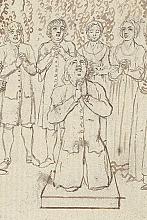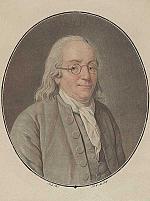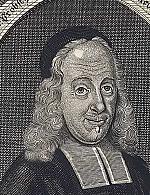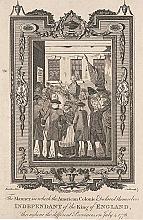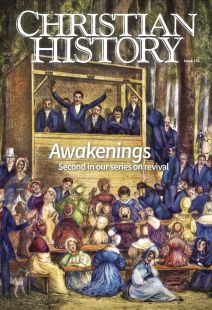Recovering “true Christianity”
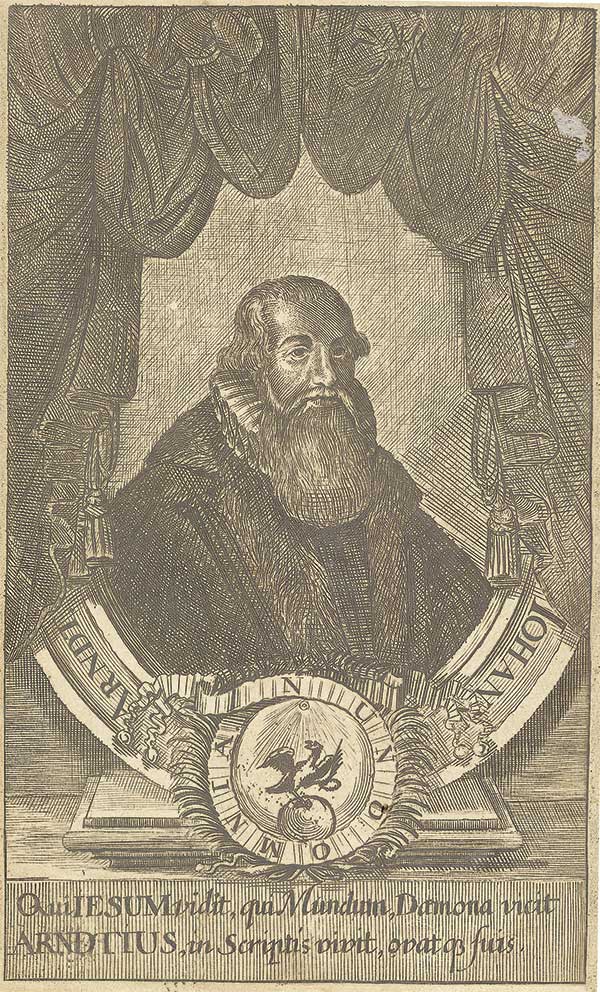
[Johann Arndt, Fünff Bücher vom wahren Christenthum, Frontispiece, 1685—Public domain, Getty Research Institute]
A century after the Reformation, when its fire began to cool, a new Protestant orthodoxy rose and with it all the challenges and conflicts of established religion. As nations tried to impose either Catholic or Protestant rule over their territories, the Thirty Years’ War (1618–1648) devastated lives and property across central Europe. On the heels of this chaos dawned the Enlightenment, bringing new challenges to the faith. So where could one find “true” Christianity? Believers across the continent sought the answer, looking for a fresh approach to the core of the faith’s teaching and practice. In the midst of turmoil and destruction, Pietism was born. Focusing on pastor-led small groups, or “colleges of piety,” Pietists initiated practical changes to recover true Christianity.
The mark of a Christian
The voice of renewal for Protestants began with the publication of a four-volume work, The True Christianity (1605–1610) by Johann Arndt (1555–1621). This Lutheran pastor drew from medieval Christian mystical spirituality, encouraging readers to encounter a union with God through Christ as the mark of a genuine Christian. “I have intended to lead the believers in Christ from dead faith to a faith that brings forth fruits,” he wrote. Arndt saw a corollary between the macrocosm of God’s indwelling within his universe and the microcosm of his indwelling within the regenerated human being.
The True Christianity was translated into 30 languages in its day, becoming the most widely read book in Protestantism, second only to the Luther Bible. So influential was Arndt that Bible scholar Johann Albrecht Bengel (1687–1752) speculated he was the gospel angel of Revelation 14:6! Arndt served as leaven preparing a generation of Lutherans for Pietism by taking his readers to the core of the union with Christ and having his presence become the identifying feature of their lives.
In 1675 a Frankfurt pastor, Philipp Jacob Spener (1635–1705), the father of Lutheran Pietism, began his renewal work with a preface titled “The Pia Desideria” to a new edition of Arndt. Because of popular demand, the preface was published as a booklet—and gave Pietism its name. Spener approached renewal by encouraging committed and teachable members of the parish to work with the clergy in the task of presenting the gospel of salvation to as many as possible.
His progress was facilitated by support and counsel from committed lay members of his own congregation, such as Johann Jacob Schütz. Schütz (1640–1690), a wealthy banker and once an atheist, experienced conversion after reading Arndt and the works of the mystic Johannes Tauler. Spener encouraged him as he went through this transformation, and in turn Schütz urged Spener to take the lead in the local collegia (college) movement. The collegia included members from the wealthy to the indigent, as well as both women and men.
Invited to a prestigious position in Dresden, Spener’s reach increased. He was even able to teach at Leipzig University. However, jealous theologians and godless courtiers forced him to find other employment.
Spener then became court pastor to the king of Prussia in Berlin, an influential post because Prussia was becoming the heart of modern Germany. Here Spener’s homilies and treatises envisioned a new Christian order of society, all in the midst of rebuilding Europe after the Thirty Years’ War. His preaching focused on new birth as the renewal of fallen humans in the image of God wherein each person was created.
Applying true Christianity
While at Dresden, Spener had met August Hermann Francke (1663–1727). As a student Francke had joined the community of Spener supporters in a revival sweeping through Leipzig University, then dominated by an orthodox but anti-Pietist faculty. Consequently students gathered conventicle fashion (that is, privately, outside the church), to study Scripture in biblical languages, changing their focus from a purely academic analysis of the text to studying it as a guide to productive faith. By the time Spener visited the campus, Francke was leading crowded Bible classes, much to Spener’s delight. Francke, acting under the influence of Arndt’s True Christianity and Spener’s Pietism, emerged as a third generation leader of Lutheran Pietism, taking its renewal aspirations to new levels.
Francke’s academic career at Leipzig ended because the established church pushed back against his association with conventicles. He became pastor at Glaucha, a town ravaged by the war and abounding with orphans. His concern for orphans became his avenue to church and community renewal as he developed a network of supporters to fund and care for them through an orphanage. This ministry led to Francke founding the first coeducational schools for all levels of society at the nearby town of Halle; along with a press to print Bibles, catechisms, and works of major Pietists (including his own); and a mission society whose ministry reached as far as India.
As a university developed at Halle, Francke wrote and taught theology, focusing on bringing seekers through a penitential struggle to overcome the cares of this world and enter the breakthrough of conversion to the Lordship of Christ. From this came a vital Pietist network within the leadership of the rising Prussian state and beyond. Among the hundreds taught under Francke’s model was Georg Friedrich Handel (1685–1759), who became one of the greatest composers of his time. The influential “Halle Project” (Aufsatz) became a model for many imitative projects throughout Germany and the world. Francke’s impact on Germany was comparable to Methodism’s later impact upon eighteenth-century England.
Halle project heirs
A new generation of Pietist leaders was born through the Halle University mission under Francke. Among the graduates of Halle was a young German count, Nicolaus von Zinzendorf (1700–1760), who became heir to his grandmother’s estate at Berthelsdorf, adjacent to Saxony in the south of the empire. He had been schooled in Francke’s emphasis on the new birth with its ecstatic breakthrough of saving grace in Christ.
But for Zinzendorf, there was no need for repentance once one had looked Christ in the eye and identified with his question to Peter, “Do you love me?” This shift in soteriology would become a basis for controversy between Pietists within Lutheranism.
However, the practical effects of either approach were similar. Zinzendorf adapted the rules of Jan Hus (c. 1370–1415) as a model for a Christian community at Herrnhut where men and women lived in separate quarters, committed to a life of worship. Their lifestyle, centered in music and the liturgy of the Eucharist, prayer, and a strong commitment to evangelize the world, fostered an atmosphere ready for revival. Soon awakening reached Herrnhut (see p. 17) through the ministry of Christian David (1692–1751) in 1727 and through the Pentecost preaching of Johann Adam Steinmetz (1689–1762). Thus the Holy Spirit empowered Moravians to begin a century-long prayer vigil for world salvation, accompanied by sending missionaries throughout the world.
A Protestant-wide movement
Renewal in Pietism among Lutherans in central Europe paralleled the birth and development of Pietism among German and Dutch Reformed churches, from the founding of the Reformed Academy at Herborn (1584) as a citadel for the Heidelberg Catechism up to the end of the eighteenth century. This academy, later a university, began in 1584 as a center for teaching the then-infamous Heidelberg Catechism of 1563.
The imperial court charged its authors with abrogating the terms of the Peace of Augsburg (1555) and barred any forms of religion beside Catholic and Lutheran. The Heidelberger, as it was known, was a boldly irenic textbook of faith intermingling the best of Lutheran thought with Calvinist insights from Geneva, forming a pastoral approach to teaching biblical salvation under the rubric of God’s covenant of grace. Through its use, laypeople could find access to the deepest truths of Christian faith and to live them out in daily life.
Teachers of this school of Pietist thought included Caspar Olevianus (1536–1587), coauthor of the new catechism; the Dutch federal theologian Johannes Cocceius (1603–1669); and the Bremen pastor Friedrich Adolph Lampe (1683–1729). Through pastors trained in this Reformed version of Pietism, laypeople in western Europe and in North America gained new access to grateful and gracious living.
Pietism made a significant impact as a renewal movement by transcending church bodies, as seen in the renowned hymnody of Paul Gerhardt (1607–1676) and Gerhard Tersteegen (1697–1769) or the important biblical studies produced by Johann Albrecht Bengel at Tubingen, among many other works. Numerous Pietist communities were also birthed through Reformed sources in the German Rhineland.
Thanks to Zinzendorf and the Moravians, Pietism also strongly influenced John Wesley and consequently, the formation of Methodism. Traces of the Pietist yearning for “true Christianity,” for recovery of an experience of joyful new birth in Christ, are scattered throughout numerous denominations, expressed deeply in the hymnody and sermons of the First and Second Awakenings in North America and beyond. Indeed it remains the most formative and influential renewal movement in the history of Protestant Christianity. CH
By J. Steven O’Malley
[Christian History originally published this article in Christian History Issue #151 in 2024]
J. Steven O’Malley is the John T. Seamands Professor of Methodist Holiness History and the director of the Center for the Study of World Christian Revitalization Movements at Asbury Theological Seminary.Next articles
The awakeners
Before revival swept through the colonies, God was preparing key people around the world
Randy PetersenLightning strikes
During the First Great Awakening, revival swept through England and the American colonies like a storm
Rebecca Price JanneySupport us
Christian History Institute (CHI) is a non-profit Pennsylvania corporation founded in 1982. Your donations support the continuation of this ministry
Donate



